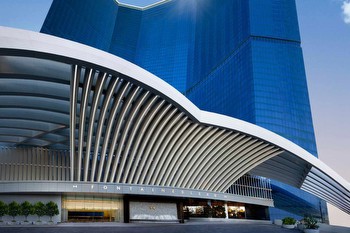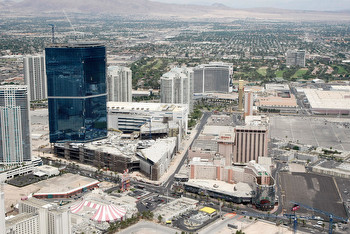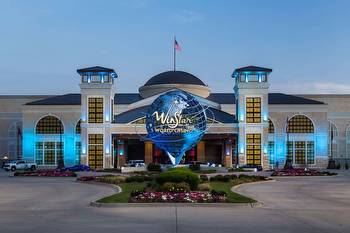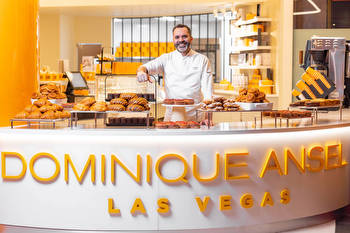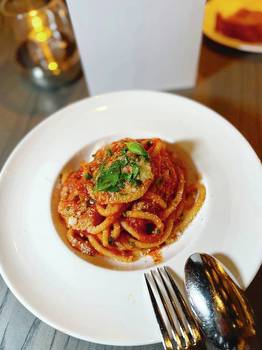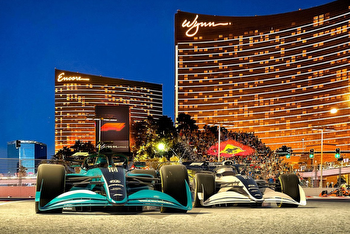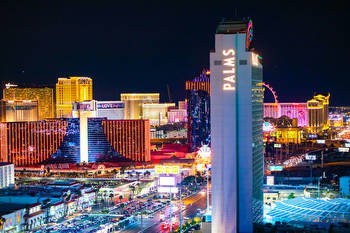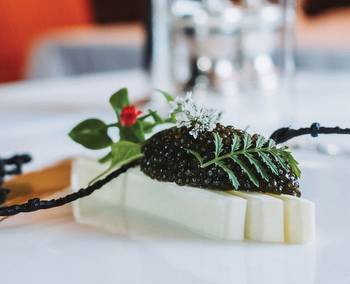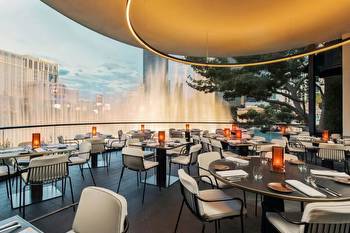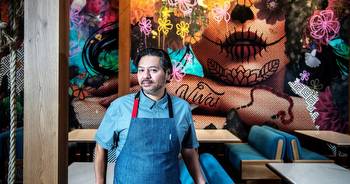You Can't Leave Vegas Without Trying This Croissant

There are a lot of good things to eat in Las Vegas. Somehow I can never remember any of them. I’ve visited semi-regularly over the years—like a penny tumbling toward the bottom of a sofa, every American finds themself in Las Vegas a certain number of times in their life—and I know that I have managed to feed myself and even to write about doing so. Still, when people ask me for Vegas recommendations, I draw a blank—all the shiny casino restaurants imported from New York and California blurring into one long perfectly fine meal I wish I had enjoyed somewhere else. There is one exception: I tell them to go to the Bellagio Hotel and Casino and eat an almond croissant.
I first tasted this almond croissant in 1998, not long after the Bellagio opened. This was a big moment for Las Vegas. For the previous decade the city had been distancing itself from the adult pleasures on which it had been founded, marketing itself instead as a family destination, with casinos shaped like cartoon castles, Egyptian pyramids, and bizarro New York skylines topped by rollercoasters—more Mickey Mouse than Rat Pack.
The Bellagio, opened by casino magnate Steve Wynn, was designed to change all that. In addition to adopting the appearance of a Lake Como palazzo, it featured an art museum, the soon-to-be-iconic acrobatic fountains, and, most strikingly, 17 restaurants—many of them high-end names imported from New York and San Francisco. These days, when every restaurant group in the country seems to have a Vegas outpost, this seems completely natural. But at the time, when the idea of dining on the Strip still brought to mind massive buffets and signs touting $3.99 PRIME RIB!!!, it seemed improbable, if not faintly ridiculous.
A magazine editor friend of mine had been invited to check out the new dining options, so I, along with another friend, tagged along. We slept three to a room and dined opulently at Le Cirque, Osteria Circo, Jean Georges Vongerichten’s Prime Steakhouse, and several other spots. I remember the meals fondly but dimly. Mostly, I remember blearily stumbling into the lobby’s coffee shop after a late night spent at the blackjack table, reimbursing the house for our comped meals, with interest. That’s where I found the almond croissant.
It was my Platonic ideal: moistened with a drizzle of rum syrup but still buttery and crackling, filled with a layer of almond cream that lightly oozed out into the pastry’s delightfully chewy burnt edges, and topped with a snowfall of powdered sugar and a plate-armor coating of toasted almonds. Of all the absurdities of the weekend, which included seeing a van Gogh within hearing distance of slot machines, this seemed the most preposterous: Why was this seemingly throwaway pastry so good? What genius of viennoiserie lurked behind the scenes? Who cared this much?








